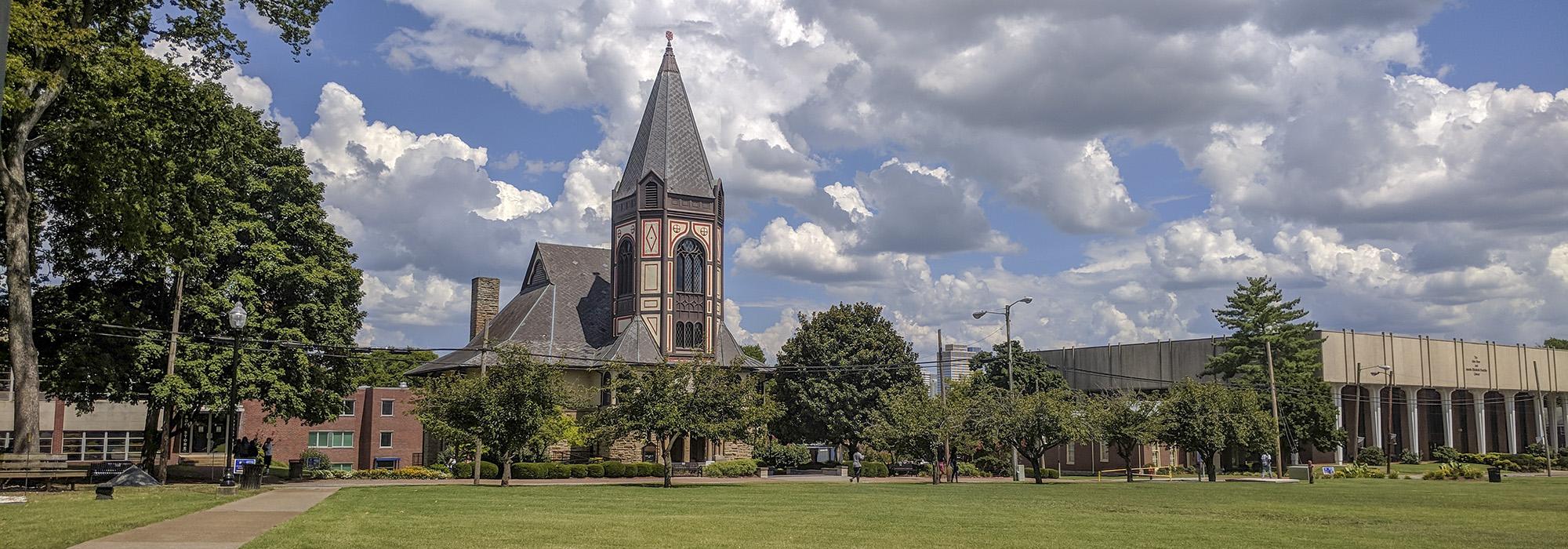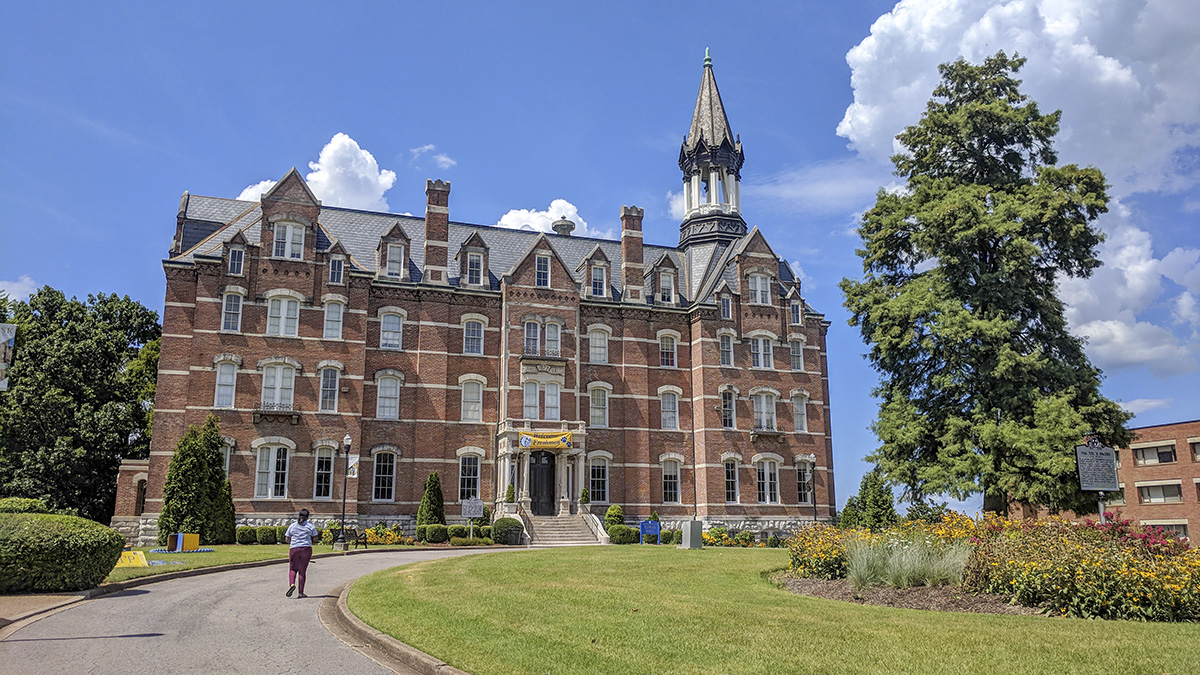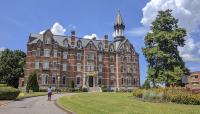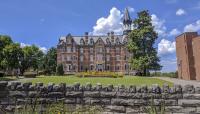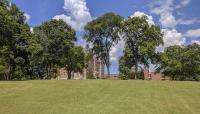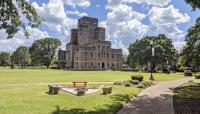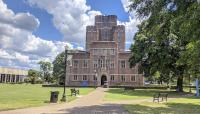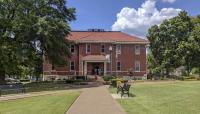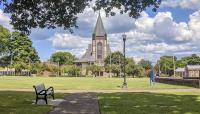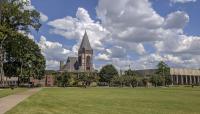Landscape Information
Established in 1865, this university was incorporated as an institution of higher learning in 1867. Originally located in what were once Union barracks near the present Union Station, the university relocated to the former site of Fort Gillem in 1876. The campus originally measured 25-acres, and the first academic structures included Jubilee Hall (1876), the music annex (1876), and the memorial chapel (1892). In 1925, student protests against the school’s autocratic administration led to the removal of President Fayette Avery McKenzie. In 1930 landscape architects David Williston and Olmsted Brothers collaborated with architect Henry Hibbs on a campus master plan.
The campus expanded south and east during the twentieth century and currently measures 40 acres. Located two miles north of downtown, the university is bound by Jefferson Street to the north and Jackson and Herman Streets to the south. The axial relationships of the campus and its buildings are established by the orthogonal street grid, with the iconic Jubilee Hall perched on the crest of an incline. Six lawns are oriented around Seventeenth Avenue, which forms the central spine of the campus, intersecting with Jefferson, Philip, and Herman Streets before terminating in a tear-drop-shaped drive south of Jubilee Hall. The Harry Elson Memorial Gate, located north of the intersection of Jackson Street and Seventeenth Avenue, marks the institution’s formal entrance. Cement paths are laid out across many of the lawns in asymmetric patterns, occasionally bordered by irregularly shaped garden beds. Many trees, including cypress, dogwoods, and cherry, are interspersed across the grounds. A limestone wall, constructed in 1873, borders the campus between Jefferson Street and Meharry Boulevard west of Seventeenth Avenue. Fisk University is part of the U.S. Civil Rights Trail, and the Fisk University Historic District was added to the National Register of Historic Places in 1978.



